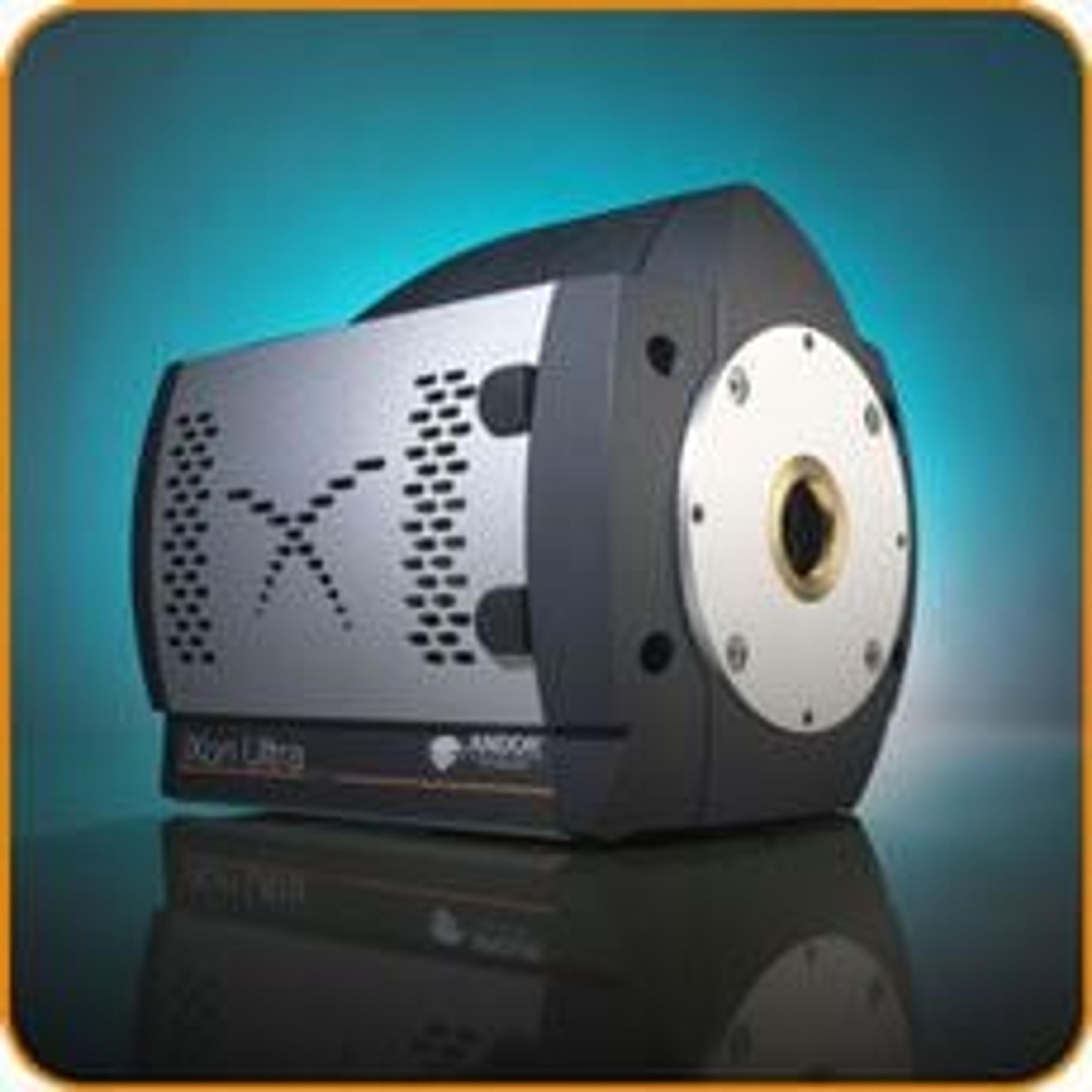EMCCD Camera for Ultra High Performance
20 Jan 2012Andor Technology plc has announced the launch of the iXon Ultra high-performance EMCCD camera. The iXon Ultra represents the next generation of the iXon platform.
The iXon Ultra, launching on the 512x512 back-illuminated sensor format, has been fundamentally re-engineered to facilitate over clocking of the pixel readout speed to 17MHz, delivering a maximum frame rate of 56 fps, whilst maintaining single photon sensitivity and quantitative stability. Furthermore, Andor’s Cropped Sensor Mode can be employed to further boost frame rates from a user defined sub-region, for example pushing a 128 x 128 area to 595 fps.
Additional new features of the iXon Ultra include USB connectivity, a lower noise CCD mode and an additional Camera Link output, offering the ability to directly intercept data for ‘on the fly’ processing, ideally suited to applications such as adaptive optics. Simultaneously, the iXon Ultra maintains all the performance attributes that have defined the iXon range to date, such as deep vacuum cooling to -100 0C, low spurious noise and EM Gain calibration. Count Convert functionality allows real time data acquisition in units of electrons or incident photons and OptAcquire facilitates one-click optimization of this versatile camera to a variety of application conditions.
Dr Colin Coates, Imaging Product Manager within Andor Technology, said; "EMCCD technology excels in applications that require low light sensitivity at speed, and it remains the superior technology for dynamic, ultra-low light applications. Andor have made great strides over the years in pushing sensitivity to the limit through minimizing noise sources, but we felt there was still some room for innovation on the speed front, so we took up that challenge. We see the enhanced frame rate performance of the iXon Ultra being well utilized across the majority of EMCCD-enabled applications, for example in single molecule detection, super-resolution microscopy, astronomy, ion signaling and cell motility measurements.”

